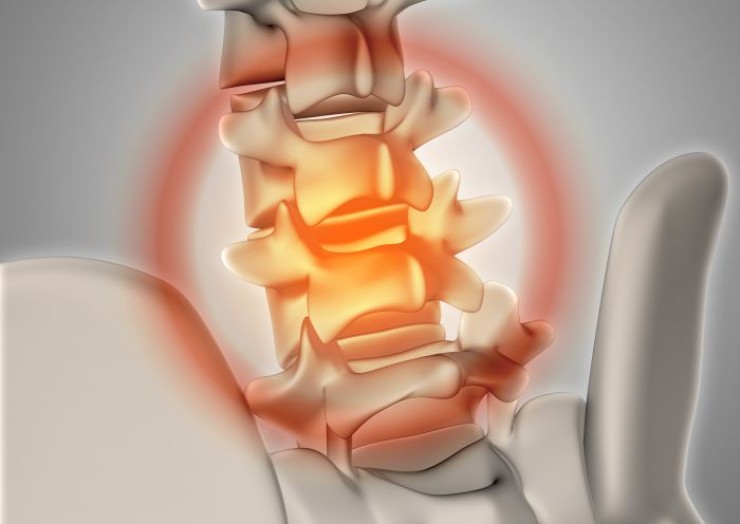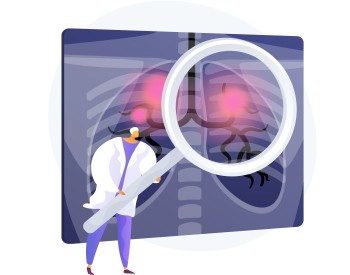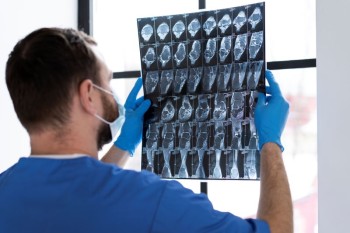
The lumbar spine plays a pivotal role in our daily activities, and understanding its nuances is crucial for effective medical care.
3D CT Lumbar Spine in India with Cost
3D CT Lumbar Spine Scan:
Unveiling the Intricacies
The field of medical imaging has witnessed a remarkable evolution with the advent of advanced technologies. One such groundbreaking development is the 3D CT Lumbar Spine Scan, providing unparalleled insights into the intricacies of the lumbar spine. In this article, we will delve into the details of this diagnostic marvel, exploring its applications, benefits, and the future it holds in the realm of spinal healthcare.
I. Introduction
A. The significance of 3D CT Lumbar Spine Scan
The lumbar spine plays a pivotal role in our daily activities, and understanding its nuances is crucial for effective medical care. The 3D CT Lumbar Spine Scan emerges as a powerful tool, offering a three-dimensional perspective that traditional imaging methods often lack.
B. Evolution of spinal
imaging technology
From conventional X-rays to magnetic resonance imaging (MRI), the journey of spinal imaging has been transformative. The emergence of 3D CT Lumbar Spine Scan marks a significant leap, revolutionizing diagnostic capabilities.
II. Understanding the Basics
A. What is a 3D CT Lumbar Spine Scan?
Unlike 2D imaging, a 3D CT Lumbar Spine Scan provides a detailed, multidimensional view of the lumbar spine. It utilizes advanced computer technology to reconstruct images, offering a comprehensive assessment of spinal structures.
B. How does it differ from traditional imaging methods?
While X-rays and MRIs capture static images, a 3D CT Lumbar Spine Scan goes beyond, creating dynamic representations. This allows healthcare professionals to visualize the spine in greater detail, aiding in precise diagnosis.
III. Advantages of 3D CT Lumbar Spine Scan
A. Precision and accuracy
The three-dimensional nature of the scan enhances precision in identifying anatomical abnormalities. This accuracy proves invaluable in diagnosing conditions like herniated discs or spinal fractures.
B. Comprehensive view of spinal structures
Traditional scans may miss subtle details, but a 3D CT Lumbar Spine Scan provides a holistic view, ensuring no aspect of the lumbar spine goes unnoticed. This comprehensive approach aids in a more thorough evaluation.
IV. Preparation for the Scan
A. Patient guidelines
Patients undergoing a 3D CT Lumbar Spine Scan need specific instructions to ensure optimal imaging results. Understanding and adhering to these guidelines is crucial for a successful scan.
B. Importance of medical history disclosure
Complete and accurate medical history disclosure is essential for the radiologist to interpret the scan effectively. Any pre-existing conditions or relevant information must be communicated beforehand.
V. The Procedure
A. Step-by-step breakdown of the 3D CT Lumbar Spine Scan
The actual scan process involves a series of steps, from patient positioning to image acquisition. Understanding each step provides insight into what to expect during the procedure.
B. Duration and patient experience
A 3D CT Lumbar Spine Scan is generally quick, minimizing discomfort for the patient. Exploring the average duration and the overall experience helps alleviate any apprehensions.
VI. Interpreting the
Results
A. Radiologist's role in analysis
The expertise of a radiologist is paramount in interpreting the scan results accurately. Exploring the radiologist's role sheds light on the crucial aspect of diagnosis.
B. Common findings and abnormalities
Understanding the typical outcomes of a 3D CT Lumbar Spine Scan aids patients and healthcare providers in comprehending potential issues and planning appropriate interventions.
VII. Applications in Medical Diagnosis
A. Detecting spinal conditions
The scan's diagnostic capabilities extend to various spinal conditions, including degenerative disc disease, tumors, and spinal stenosis. Exploring these applications highlights the scan's significance in healthcare.
B. Impact on treatment planning
Accurate diagnosis influences treatment decisions. Delving into how the 3D CT Lumbar Spine Scan shapes treatment plans underscores its role in improving patient outcomes.
VIII. Comparisons with Other Imaging Techniques
A. MRI vs. 3D CT Lumbar Spine Scan
Contrasting these two imaging modalities provides insights into when each is most beneficial, offering a guide for healthcare professionals in choosing the appropriate diagnostic tool.
B. X-ray vs. 3D CT Lumbar Spine Scan
Examining the differences between traditional X-rays and 3D CT Lumbar Spine Scans elucidates the advantages of the latter in terms of diagnostic accuracy.
IX. Safety Considerations
A. Radiation exposure concerns
Addressing common concerns about radiation exposure is crucial for patients considering a 3D CT Lumbar Spine Scan. Explaining safety measures and their effectiveness fosters trust in the procedure.
B. Safety measures during the scan
Highlighting the precautions taken during the scan assures patients of their well-being, addressing any apprehensions they may have about the procedure.
X. Future Trends in Spinal Imaging
A. Technological advancements
Ongoing research and development in spinal imaging promise even more advanced techniques in the future. Exploring these potential advancements offers a glimpse into the evolving landscape of diagnostic tools.
B. Potential breakthroughs
Anticipating breakthroughs in spinal imaging technology allows both healthcare providers and patients to stay informed about upcoming developments that may further enhance diagnostic capabilities.
XI. Real-life Patient Experiences
A. Testimonials and success stories
Real-life accounts from patients who underwent a 3D CT Lumbar Spine Scan provide valuable insights into the practical benefits and positive outcomes associated with the procedure.
B. Patient satisfaction and outcomes
Analyzing overall patient satisfaction and outcomes contributes to a comprehensive understanding of the effectiveness and impact of the 3D CT Lumbar Spine Scan.
XII. Addressing Common Misconceptions
A. Debunking myths surrounding 3D CT Lumbar Spine Scan
Dispelling common misconceptions ensures that patients make informed decisions about undergoing a 3D CT Lumbar Spine Scan, promoting clarity and trust in the procedure.
B. Clarifying concerns about safety and efficacy
Addressing concerns related to the safety and efficacy of the scan fosters a transparent dialogue between healthcare providers and patients, encouraging a sense of confidence in the diagnostic process.
XIII. Choosing the Right Facility
A. Factors to consider when selecting a diagnostic centre
Guidelines for selecting a facility for a 3D CT Lumbar Spine Scan encompass factors such as accreditation, expertise, and equipment quality. This ensures a reliable and effective diagnostic experience.
B. Importance of skilled radiologists
Emphasizing the significance of skilled radiologists underscores the role of expertise in obtaining accurate and meaningful results from a 3D CT Lumbar Spine Scan.
XIV. Insurance Coverage and Costs
A. Understanding insurance policies
Navigating the complexities of insurance coverage for a 3D CT Lumbar Spine Scan is essential for patients. Clear explanations of coverage options aid in financial planning.
B. Estimated costs and financial considerations
Providing transparency about the potential costs associated with a 3D CT Lumbar Spine Scan allows patients to make informed decisions based on their budget and financial considerations.
XV. Conclusion
A. Recapitulation of the significance of 3D CT Lumbar Spine Scan
Summarizing the key takeaways reinforces the importance of the 3D CT Lumbar Spine Scan in advancing spinal healthcare and diagnostic capabilities.
B. Encouragement for proactive spinal health management
Concluding with a call to action encourages readers to prioritize their spinal health, recognizing the role of diagnostic tools like the 3D CT Lumbar Spine Scan in proactive healthcare.
Frequently Asked Questions About 3D CT Lumbar Spine Scan
1. Is a 3D CT Lumbar Spine Scan safe?
Yes, the procedure is considered safe, with minimal radiation exposure and stringent safety measures in place.
2. How long does a 3D CT Lumbar Spine Scan take?
The scan is typically quick, lasting around 10 to 15 minutes on average.
3. Can the scan detect all spinal conditions?
While it is highly effective, the scan's ability to detect specific conditions may vary. Consult with your healthcare provider for detailed information.
4. Is insurance coverage available for 3D CT Lumbar Spine Scans?
Several insurance plans include coverage for the scan, although the extent of coverage can differ. It is advisable to contact your insurance provider for specific details regarding your coverage.
5. Are there alternative imaging methods to a 3D CT Lumbar Spine Scan?
Yes, alternatives like MRI and X-rays exist. The choice depends on the specific diagnostic needs and recommendations from healthcare professionals.
6. What can I expect after the
scan?
There's typically no downtime after a 3D CT Lumbar Spine Scan, and you can resume your regular activities. The radiologist will analyze the results and share them with your healthcare provider.
7. Are there any side effects associated with the scan?
Side effects are rare, but some individuals may experience mild discomfort from lying still during the procedure. Any concerns should be discussed with the healthcare team.
8. Can I request a 3D CT Lumbar Spine Scan, or is it prescribed by a doctor?
Generally, a healthcare provider prescribes the scan based on clinical need. It's essential to discuss symptoms and concerns with your doctor, who will determine if the scan is necessary.
9. Are there age restrictions for undergoing a 3D CT Lumbar Spine Scan?
There is no strict age limit, but considerations may vary for pediatric or elderly patients. The decision is made on a case-by-case basis by healthcare professionals.
10. What information should I provide to the radiologist before the scan?
It's crucial to disclose any allergies, existing medical conditions, or prior surgeries to ensure a safe and effective imaging process.
11. Can I eat or drink before the scan?
In most cases, there are no dietary restrictions before a 3D CT Lumbar Spine Scan. However, it's advisable to follow any specific instructions provided by the healthcare team.
12. Will I receive a copy of the scan results?
Typically, the results are shared with your referring healthcare provider, who will discuss the findings and any necessary follow-up steps with you.
13. Can I bring someone with me during the scan?
While it's generally allowed, check with the imaging facility beforehand, as some centres may have specific policies regarding accompanying individuals.
14. How often should one undergo a 3D CT Lumbar Spine Scan?
The frequency of scans depends on individual health circumstances. Healthcare providers will recommend the appropriate timing based on
(0)
Login to continue



